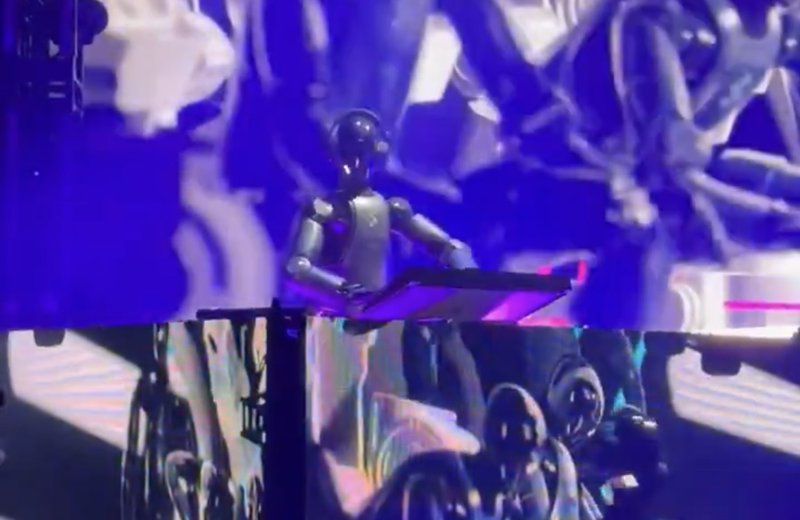In the grand, cacophonous symphony of tech marketing, some notes are subtler than others. A quiet press release, a carefully worded spec sheet. Then there’s the strategy of putting your multi-million-dollar humanoid robot on stage with electronic music icon Deadmau5 and having it pretend to DJ. This is not subtle. This is a paradigm shift played at 128 BPM.
When Figure AI’s founder and CEO, Brett Adcock, posted a video of his creation at the decks, it wasn’t just a fun party trick. It was a declaration. The age of the humanoid as a mere factory workhorse is over before it even properly began. We are now entering the era of the robot as a cultural product, a lifestyle brand, a status symbol with actuators. Forget crunching numbers in a warehouse; the new benchmark is whether your robot can drop a beat without dropping itself.
From Factory Floor to Festival Stage
Let’s be clear: the Figure 02 robot likely wasn’t improvising a progressive house set. Its movements were almost certainly as pre-programmed as the spectacular light shows Deadmau5 is famous for. But that’s entirely beside the point. The visual is the message. By placing its humanoid—a machine designed for logistics, manufacturing, and hazardous jobs—into a context of pure entertainment and culture, Figure AI is executing a brilliant marketing pivot.
This move deliberately bypasses the usual, tedious discourse around robotic capabilities. While competitors are busy releasing videos of their bots slowly stacking crates, Adcock is associating his with a Grammy-nominated artist known for his own tech-forward persona. It’s a calculated effort to leapfrog the “is it useful?” question and go straight to “is it cool?”
This is less about showcasing technical prowess and more about manufacturing a narrative. Adcock’s vision, as stated in his master plan, is to “positively impact humanity and create a better life for future generations” by eliminating unsafe and undesirable jobs. But the path to putting a robot in every factory—and eventually every home—isn’t paved with spec sheets alone. It’s paved with public acceptance, trust, and, dare we say, desire.
The iPhone of Robots Won’t Be Sold on Specs
The email we intercepted puts it perfectly: the real competition won’t be about tech specs. It will be about trust, emotion, and narrative. Who builds the first robot people feel safe with? Who makes the first humanoid that gets TikTok famous? Who becomes “the iPhone of robots”?
The real headline is the robot sharing the limelight, not the load capacity. This is the Tesla strategy applied to bipeds. You don’t sell the battery range; you sell the vision of the future. Adcock himself has spoken about humanoid robots as the “ultimate deployment vector for AGI,” envisioning a future where you see as many robots as humans. Getting there requires making people want them around, not just need them.
A New Marketing Playbook
This celebrity endorsement, this foray into pop culture, is the first page of a new marketing playbook for robotics. We’re moving beyond the sterile, industrial context that has defined robotics for decades. The goal is no longer just to build a machine that can perform a task, but to build a brand that people can connect with emotionally.
“I believe that positively affecting the future of humanity is the moral priority of our time,” Adcock wrote in his master plan. “These robots can eliminate the need for unsafe and undesirable jobs — ultimately allowing us to live happier, more purposeful lives.”
Achieving that grand vision requires more than just engineering; it requires seduction. It means making advanced AI and robotics seem less like a threat and more like an aspirational product. It’s about shifting the public perception from a cold, job-stealing automaton to a helpful, maybe even entertaining, companion.
The Beat Goes On
The Deadmau5 stunt is more than just a clever photo-op. It’s a signal that the humanoid race is becoming a two-front war: one fought in the lab over technical superiority, and another fought in the court of public opinion over cultural relevance. As companies like Figure AI continue to push the boundaries of what these machines can do, their biggest challenge may not be programming a robot to walk, but programming society to welcome it.
Whether this strategy leads to a future of helpful robot butlers or just more elaborate publicity stunts remains to be seen. But one thing is certain: the robot marketing revolution will be televised, live-streamed, and set to a thumping bassline. The quiet, humble robot of the factory is dead. Long live the rockstar robot.






